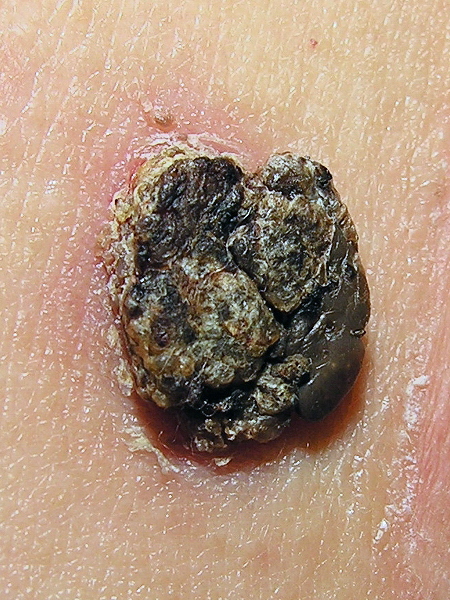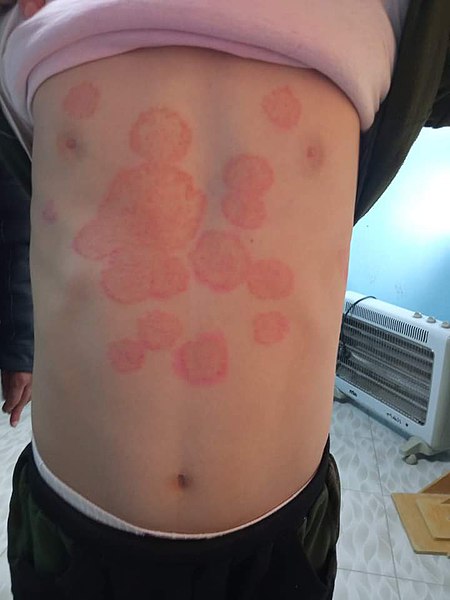Playlist
Show Playlist
Hide Playlist
Tinea Corporis (Ring Worm) and Seborrheic Keratosis
-
Slides Dysplastic and Malignant Skin Lesions.pdf
-
Download Lecture Overview
00:03 As you recall, tinea corporis, also known as ringworm is a common fungal infection. 00:09 The risk factors for this are diabetes, HIV, obesity patients who have pets, and then moist areas or hygiene problems. 00:18 It is, of course, pruritic and our patient’s lesion was described as mildly itchy. 00:25 Most often, you'll see on exam singular or perhaps multiple raised, annular erythematous lesions. 00:32 It’s why it's called ringworm. It's annular type lesions with an irregular border, as we have in our patient central clearing and scale however. 00:41 Now, our patient is not seeing any evidence of scale on her lesion. 00:45 There may also be pustules with tinea corporis. 00:48 We treat it with a topical antifungal and it’s very readily treatable. 00:53 Well, we know that our patient does have some itchiness but still, this doesn't seem very likely based on the description and the image that we have. 01:00 I think we can safely take tinea corporis off of our list. 01:04 Let's move on to talk about seborrheic keratosis. 01:06 Now, this is a very common benign skin tumor. 01:11 There may be some hereditary features. 01:13 Patients whose parents had a lot of these lesions are very likely to develop it themselves and they tend to increase with age. 01:20 Sometimes, they're referred to as the barnacles of aging growing on the side of your ship as you get older. 01:26 They are described as exophytic. 01:28 Exophytic means that they are outwardly growing or growing out of the skin as opposed to infiltrating into the skin. 01:35 You'll oftentimes see terms like waxy or greasy. 01:39 They're brownish black in coloration and they're stuck-on in appearance. 01:43 That's again one of those terms you should look for on the boards. 01:46 They're papules, nodules, they may be plaques and they evolve very slowly over months to years. 01:53 Treatment is generally you just follow them or ignore them but if they're in particular areas where they're bothersome or maybe on a brow line or in a place where cosmetic appearance matters you can remove them with curettage or cryotherapy. 02:09 It doesn't sound like that's what our patient has. 02:11 She has a very flat lesion that has irregular borders and it's in a sun-exposed area so this doesn't really fit with seborrheic keratosis. 02:21 Let's take that one off of our list, too.
About the Lecture
The lecture Tinea Corporis (Ring Worm) and Seborrheic Keratosis by Stephen Holt, MD, MS is from the course Neoplasms of the Skin.
Included Quiz Questions
Which of the following statements is correct?
- Seborrheic keratosis manifests as greasy, stuck-on papules or plaques.
- Seborrheic dermatitis manifests as annular lesions with irregular borders and central clearing.
- Tinea corporis requires a prolonged treatment with topical antifungals for up to 12 weeks.
- Lesions of tinea corporis evolve very slowly over months to years.
Customer reviews
5,0 of 5 stars
| 5 Stars |
|
5 |
| 4 Stars |
|
0 |
| 3 Stars |
|
0 |
| 2 Stars |
|
0 |
| 1 Star |
|
0 |





